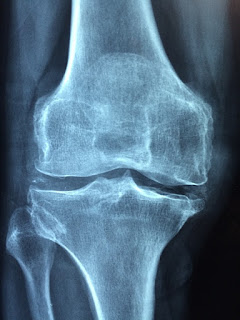Joint Pain
The joints are the parts of your
body where the bones meet. The joints allow the bones of your skeleton to move.
The joints form the connections between the bones. They provide support and
help you move. Any joint damage caused by illness or injury can interfere with
movement and cause a lot of pain.
Examples of joints include:
- Shoulders
- Hips
- Elbows
- Knee
Joint pain refers to discomfort,
pain and pain in any of the joints of the body. Joint pain is a common
complaint. It does not usually require a hospital visit. Sometimes, joint pain
occurs due to an illness or injury. However, it could be due to other
conditions or factors.
Symptoms of Joint Pain
In some cases, joint pain will
require consulting a doctor. You should make an appointment if you don't know
the cause of the joint pain and are experiencing other unexplained symptoms.
- The area around the joint is swollen, red, fragile or warm to the touch
- The pain persists for three days or more
- You have a fever, but no other sign of flu
Go to the emergency room if one of
the following conditions occurs:
- You have been seriously injured.
- The joint appears deformed.
- The swelling of the joint occurs suddenly.
- The joint is completely immobile.
- You have severe joint pain.
Causes of Joint
Pain
- Bursitis or inflammation of the swab around the joints
- Lupus
- Gout
- Some infectious diseases, such as mumps, flu and hepatitis
- Chondromalacia of the patella or cartilage breakage at the knee
- An injury
- Tendonitis or tendon inflammation
- An infection of the bone or joint
- Excessive use of a joint
- Cancer
- Fibromyalgia
- Osteoporosis
- Sarcoidosis
- Rickets
How Joint Pain is Diagnosed?
Your doctor
will probably perform a physical exam. They will also ask you a series of
questions about joint pain. This can help reduce potential causes.
- An X-ray may be needed to identify arthritis-related joint injuries.
- If your doctor suspects that there is another cause, you can order a blood test to detect certain autoimmune conditions. They may also require a sedimentation rate test to measure the level of inflammation in the body or a complete blood count.
Treatment of Joint Pain
Currently, no
treatment is available that will completely eliminate the joint pain associated
with arthritis or prevent it from returning. However, there are ways to manage
pain:
Home Treatment
- It can help in the use of painkillers or can take non-steroidal anti-inflammatory drugs to reduce pain, swelling and inflammation.
- Stay physically active and follow a fitness program focused on moderate exercise.
- Stretch before making efforts to maintain a good range of motion in the joints.
- Keep your body weight in a healthy range. This will reduce stress on the joints.
- If your pain is not due to arthritis, you can try taking an unacceptable anti-inflammatory drug, massage, take a warm bath, stretch yourself frequently and rest properly.
Medical Treatment
Treatment
options are depended on the cause of the pain. In some cases, the doctor will
have to extract the fluid accumulated in the joint area to check for infection
or gout or other causes of joint pain. He could also recommend surgery to
replace the joint.
Other methods
of non-surgical treatment may include lifestyle changes or drugs that can cause
remission of RA. In the case of RA, the doctor will deal with the inflammation
first. Once the RA is released, medical treatment will focus on maintaining the
conditions constantly so as to avoid any epidemic.




Comments
Post a Comment